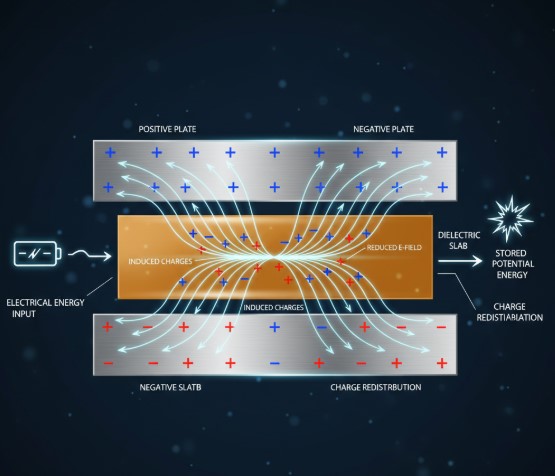Understanding the concepts of Relative and Absolute Motion forms a crucial part of mastering the principles of kinematics. When we delve into the complex worlds of physics, these two notions significantly influence how we perceive and analyse movement. In essence, motion can appear differently depending on the frame of reference. By deciphering these concepts through real-world examples and mathematical demonstrations, we’ll gain a deeper understanding of their applications in various technological and scientific domains.
Defining Relative Motion
Relative motion refers to the movement of a body as observed from a specific frame of reference. This means that movement isn’t absolute but depends on the observer’s point of view. Consider two trains moving parallel to each other: to a passenger in one train, the other train may seem stationary if both are travelling at the same speed in the same direction.
Mathematical Representation of Relative Motion
In mathematical terms, relative velocity can be defined as:
\[
\vec{v}_{AB} = \vec{v}_{A} – \vec{v}_{B}
\]
where:
– \(\vec{v}_{AB}\) is the velocity of object A relative to object B,
– \(\vec{v}_{A}\) is the absolute velocity of object A,
– \(\vec{v}_{B}\) is the absolute velocity of object B.
For example, if a car \(A\) is moving at \(60 \, \text{km/hr}\) north, and car \(B\) is moving at \(40 \, \text{km/hr}\) north, the velocity of car \(A\) relative to car \(B\) is:
\[
\vec{v}_{AB} = 60 \, \text{km/hr} – 40 \, \text{km/hr} = 20 \, \text{km/hr}
\]
We also Published
- Static and Dynamic Typed System
A\xa0Type\xa0in programming is used to refer to the data type such as int, char, or user-defined structured data types. A\xa0Static type\xa0programming language is one where the data type of the variable is known before the execution of the program. This is done during the compilation of the code. In\xa0Dynamic type\xa0programming language, the data type of […] - Empty Set
A set that\xa0does not have any members\xa0is called an empty set. ⇒\xa0Such sets are represented as\xa0{}\xa0or using the symbol\xa0∅\xa0(derived from\xa0Φ) which has been explicitly developed to designate an empty set. ⇒\xa0Sometimes { ∅ } is also used to designate an empty set. ⇒\xa0An empty set is also called a\xa0Void\xa0set. ⇒\xa0The cardinality of an empty set […] - Cartesian Product
The cartesian product of two sets A and B is defined as a set formed by all the possible ordered pairs of elements from A and B, such that the first element comes from set A and the second element comes from set B. The cartesian product is denoted as A × B. \u200bLet a […]
Understanding Absolute Motion
The absolute motion describes movement with respect to a fixed reference frame, typically the ground or another stable entity. Unlike relative motion, absolute motion remains consistent regardless of the observer’s perspective.
Example of Absolute Motion
In classical physics, absolute motion was thought to exist as motion relative to a fixed, immovable frame of reference—often referred to as the “absolute space” or “ether.” However, with the advent of Einstein’s theory of relativity, the concept of absolute motion has been largely discarded because all motion is considered relative.
In physics, the concept of absolute motion implies a frame of reference that is considered universally stationary, which doesn’t exist according to the theory of relativity. Instead, motion is always relative to some frame of reference.
That said, if we consider “absolute motion” in a simplified or classical sense (pre-relativity), it might refer to the following examples:
- Uniform Linear Motion: In classical mechanics, an object moving at a constant velocity in a straight line relative to an assumed absolute space could be considered to have absolute motion. For instance, a car moving at a constant speed along a straight road, relative to the ground, could be an example if we assume the ground is a stationary frame.
- Rotational Motion: A spinning object might be described as having absolute rotational motion if it rotates around an axis. For example, a spinning top or the rotation of the Earth on its axis was once thought to have absolute rotational motion relative to the fixed stars.
- Motion in a Vacuum: In classical physics, the motion of light in a vacuum was once thought to be absolute, as it was believed to propagate through a medium called the “luminiferous ether.” This idea was disproved by the Michelson-Morley experiment, which showed that the speed of light is constant in all inertial frames of reference.
In modern physics, particularly with the theory of relativity, the idea of absolute motion has been replaced with the understanding that all motion is relative to an observer’s frame of reference. There is no universally fixed background or reference point to measure “absolute” motion against.
Comparing Relative and Absolute Motion
To illustrate the differences between relative and absolute motion, consider the following:
Relative Motion: A passenger walking inside a moving train appears to move slower to an outside observer compared to an observer inside the train.
Absolute Motion: The entire train’s movement with respect to the station platform remains the same irrespective of where the observer stands.
Mathematical Insights
Incorporating time into these concepts, let’s consider how relative position changes:
\[
\vec{x}_{AB}(t) = \vec{x}_{A}(t) – \vec{x}_{B}(t)
\]
where:
– \(\vec{x}_{AB}(t)\) is the position of object A relative to object B at time \(t\),
– \(\vec{x}_{A}(t)\) and \(\vec{x}_{B}(t)\) are the absolute positions of objects A and B at time \(t\).
For enhanced clarity, let’s examine a scenario: If two particles start from the same point but with different velocities:
\[
\vec{x}_{A}(t) = \vec{x}_0 + \vec{v}_{A}t
\]
\[
\vec{x}_{B}(t) = \vec{x}_0 + \vec{v}_{B}t
\]
Thus, their relative position would be:
\[
\vec{x}_{AB}(t) = (\vec{x}_0 + \vec{v}_{A}t) – (\vec{x}_0 + \vec{v}_{B}t) = (\vec{v}_{A} – \vec{v}_{B})t
\]
By using Mathjax, these formulae and equations become more intuitive for comprehension and application.
Applications of Relative and Absolute Motion
The principles of relative and absolute motion find applications across technology and science, such as:
Aeronautics: Pilots use relative motion to navigate efficiently.
Navigation Systems: GPS technology relies on these principles to provide accurate location data.
Astrophysics: Helps in understanding celestial movements and orbits.
Example in Aeronautics
Consider two aircraft flying in the same direction:
plane_A_speed = 600 # km/hr
plane_B_speed = 550 # km/hr
relative_speed = plane_A_speed - plane_B_speed
print(f'The relative speed of plane A to plane B is {relative_speed} km/hr')
The relative speed of plane A to plane B is 50 km/hrReal-World Implications and Insights
Grasping the nuances of relative and absolute motion aids not just in academic pursuits but enhances our comprehension of everyday phenomena. Consider the implications in self-driving car algorithms, where relative motion ensures safe and efficient navigation through traffic.
“Motion is a change in position of an object with respect to time and its reference point.”
An understanding of these principles provides a cornerstone for further exploration in physics, enabling us to decode the universe’s intricate mechanisms.
Further Reading and References
For those interested in expanding their knowledge base:
- Explore advanced kinematics textbooks
- Engage with online simulations and virtual labs
- Participate in relevant workshops and webinars
Incorporating these valuable resources will only deepen your grasp and application of such fundamental physics concepts.
RESOURCES
- Mechanics in Physics | Definition, Types & Examples | Study.com
- Just a moment…
- 1: Introduction to Classical Mechanics – Physics LibreTexts
- Physics 206 — Summer 2024
- What is mechanics in physics? – Quora
- Mechanics | Definition, Examples, Laws, & Facts | Britannica
- What are the differences between physics and mechanics? – Quora
- PHYS101: Introduction to Mechanics | Saylor Academy
- Mechanics, Forces and Motion
- Reddit – Dive into anything





0 Comments